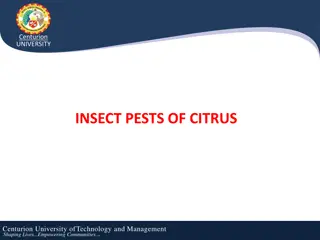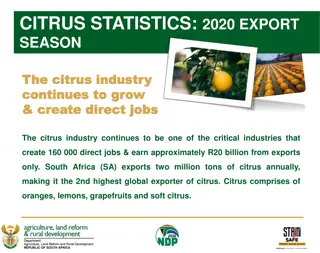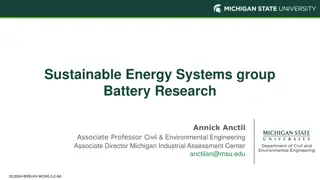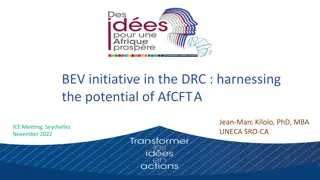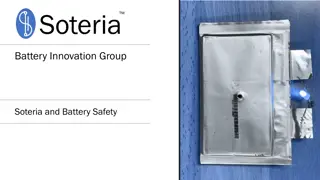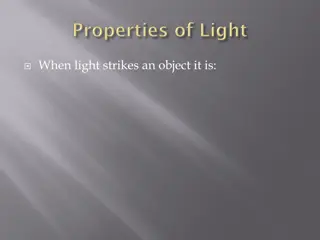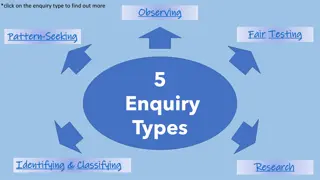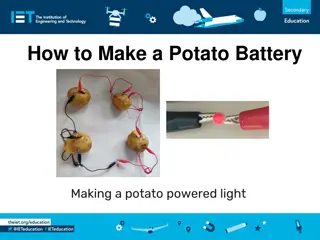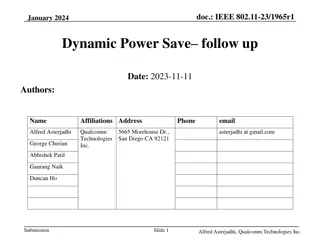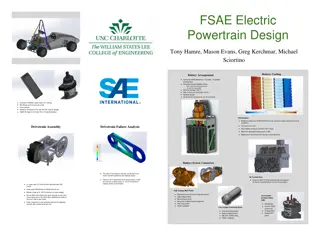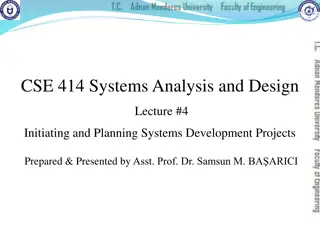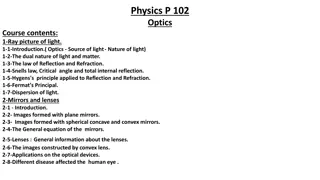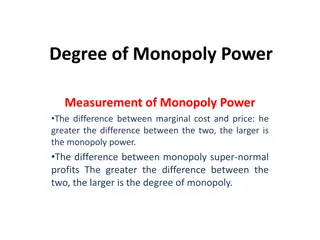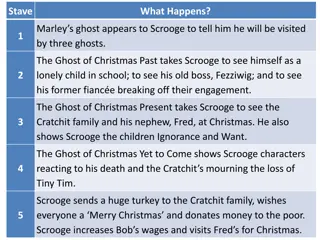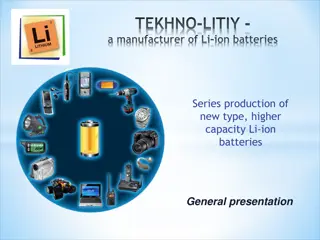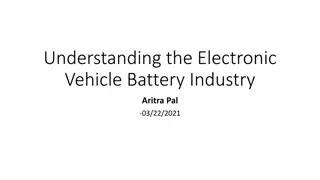Citrus Battery Science Fair Project: Can Lemons, Limes, or Grapefruits Power a Christmas Light?
Circuits play a crucial role in powering devices, with various energy sources being explored to be resourceful. This science fair project investigates if lemons, limes, or grapefruits can independently generate enough energy to light a Christmas bulb. Results show different voltages produced by each citrus fruit, shedding light on their potential as alternative energy sources.
Download Presentation

Please find below an Image/Link to download the presentation.
The content on the website is provided AS IS for your information and personal use only. It may not be sold, licensed, or shared on other websites without obtaining consent from the author. Download presentation by click this link. If you encounter any issues during the download, it is possible that the publisher has removed the file from their server.
E N D
Presentation Transcript
SCIENCE FAIR PROJECT: CITRUS BATTERY
Abstract: Circuits allow power to connect through a system of wires to allow for electricity to power things. There are many different ways electricity can be produced and used to help power things that people use everyday. Alternative energy sources are important to continue to research to help people find ways to be resourceful with sources they currently have. For example, the use of the acid of lemons, limes, and grapefruit could possible help create enough voltage to power a circuit. A test was conducted to determine if lemons, limes, or grapefruits could produce 12.7 volts of current to light a Christmas bulb. On the first day of the experiment the limes were tested. The lime generated numbers from 0 to 0.21. the limes also recorded measurements of 0.2, 0.4, and 0.20. The limes got the most voltage by going in a negative to positive (- +) positive to negative (+ -) pattern. On day 2 the lemons were tested. The lemons got numbers from 0.60 to 0.98. The lemons also generated voltages of 0.91 and 0.64. The lemons generated these numbers by connecting the wires to the zinc nails and copper gauge wire. The data collected for grapefruits also proved that more voltage is generated by connecting the wires to the nails and wires. The grapefruits generated 0.99 volts by connecting the wires to the nails but only 0.30 when plugging the probes into the fruits.
Question: Can lemons ,limes ,or grapefruits generate enough energy independently to power a Christmas light?
Research Paper: Circuits are usually found in almost anything with a power source. Power source meaning a battery, turbine of some sort, even lightning. That energy will then get transferred through a circuit and eventually to a load (aka electrical output). An example is a clock, an outlet in a wall, lightbulb, and many, many more things. The information from Tom Igoe states that a circuit is a closed loop containing a source of electrical energy (like a battery) and a load (like a lightbulb). He also states that every circuit has a load of some sort and all of the electrical energy in a circuit has to get used by the load. The load will then convert the electrical energy to some other energy like heat energy or light energy. A circuit with no load is called a short circuit. In a short circuit, the power source feed all its power through the wires and back to itself (Igoe, 2007). Lights can be a main part of a circuit to indicate that the circuit is functioning. Batteries power the light within the circuit. According to The Village of Pawpaw, a kilowatt is a measurement of energy over an hour. Say you used 60 watts in an hour, you would be using .06 kilowatts an hour (or kwh.) Or, if you re using 150 watts, it would be equal to .15 kilowatts. Kilowatts is also a measurement of available energy. 1 kilowatt-hour is the equivalent of 1,000 watts being used continuously for 1 hour. A watt is a measurement of power multiplied by the current. 1 megawatt is equal to 1000 kilowatts and 1 gigawatt is equal to 1000 mega -watts. Voltage is the measurement of electrical potential and the measurement of power. A watt is a measurement of power multiplied by current. Current is the rate charges throughout a wire. Electrical current is measured in amps. Direct current is a current whose polarity stays the same. Alternating current however is much better at transmitting Long distances (Seidle,2003).
Research Paper (continued): Lead acid batteries have changed little throughout the decades. People have been using lead acid batteries to power automobiles and watercrafts. Lead acid batteries consist of several single cells. Each cell can produce approximately 2.1 volts. Each cell consists of a positive plate covered with a paste of lead dioxide and a negative plate made out of sponge lead, with an insulating material [separator] in between. They are enclosed in a plastic battery case and submerse in an electrolyte consisting of water and sulfuric acid. To produce a voltage, the lead acid battery must receive a charge of 2.1 volts from a charger. After a while, the lead acid battery s positive and negative plates get coated with a substance called lead sulfate. The lead sulfate is caused by a chemical reaction between sulfuric acid and the lead plates. The lead sulfate on the plates can be converted back into lead and sulfate acid which can be used to create a voltage. The discharge battery must be immediately connected to a charger or the lead sulfate will form hard crystals that can be reconverted. To recharge the battery you need an intelligent charger system that can vary the charging voltage based on the state of charges (Progressive Dynamics, 2017). Lead acid and lithium acid both power batteries. Lead acid are not very expensive and can be depended on. Also, lead acid batteries have low density energy. That means it can only deliver so much power to your device. In difference, lead acid has less density than lithium yet they can occasionally explode and are very expensive. One material such as lithium loses electrons while other materials (such as copper) gains them. Electrons flow between the materials and release energy that power devises (Pinchefsky, 2017).
Research Paper (continued): A multi-meter measures the amount of voltage something has. One would use a multi-meter when measuring the electrical device such as a battery. A multi-meter is capable of measuring voltage from other parts of a circuit as well. Measuring different parts of a circuit is called nodal analysis. If a multi-meter was to measure something with a voltage too low for its range the multi-meter will display a one. If one was to use a multi-meter to measure where the voltage is at going into the resistor, and then where the ground is on an what is LED, and then just a LED this is known as voltage drop.( The Village of PawPaw, 2017). Altogether, citrus batteries could have the power to power the future world of Earth and beyond. Citrus fruits come from everywhere there is fruit trees. They could be used to power lightbulbs and small electrical devices like a controller for remote control airplanes and cars. Citrus fruit could save a lot of energy and they are pretty easy to get. Also citrus fruits are safer than lithium and lead acid batteries. Batteries have a lot of chemicals that can danger a human if consumed or came in contact with the eyes or skin. All in all citrus batteries have the potential to be safer and a much better battery choice in the future.
Bibliography: Igoe, Tom, 2007. Understanding Electricity. Code circuits construction, Tom Igoe, 31 Aug. 2007, www.tigoe.com/pcomp/code/circuits/understanding-electricit/. Pinchefsky, 2017. The future of batteries: Better batteries | HPE. The future of batteries: Better batteries | HPE | HPE , Carol Pinchefsky, 24 May 2017, www.hpe.com/us/en/insights/articles/three-batteries-that-could-power-our-future- 1705.html. Progressive Dynamics, 2017. Battery Basics. Progressive Dynamics, Progressive Dynamics, Inc., 2017, www.progressivedyn.com/service/battery-basics/. Siedle, Nathan. How to Use a Multimeter-learn.Sparkfun. Spark Fun, 2003, www.bing.com/cr?IG=70AED3A1F04D4C45A97ECC6008BEF2F1&CID=14F436B59DC5 693E25203DE89C6A6824&rd=1&h=t9gLGwTa1nB- zqSf4SxQBgt3LLK2ukJiUNuAI1KjJT8&v=1&r=https%3a%2f%2flearn.sparkfun.com%2ft utorials%2fhow-to-use-a-multimeter%2fall.pdf&p=DevEx,5333.1. The Village of PawPaw, 2017. How Much Electricity Does a Light Bulb Use and What will ... www.pawpaw.net, The Village of PawPaw, Published, 20172017.www.bing.com/cr?IG=5A6A352A3748467297DE3B37AFBFBE94&CID=028BF22 2610D60622711F97F60A261CB&rd=1&h=r3I6dP6bIbsKM9KlT_mILhizkSQWW_jRu6Ivr5 cA4os&v=1&r=http%3a%2f%2fwww.pawpaw.net%2fPortals%2f38%2fdocs%2fhowmu chelec.pdf&p=DevEx,5066.1.
Hypothesis: If a circuit is complete using 6 lemons, then the voltage from the lemons will be able to light a Christmas bulb.
Materials: 9 Limes 6 Lemons 5 Grapefruits Copper Gauge Wire 1 packet of Zinc Nails Plyers Wire strippers Voltmeter Standard Christmas light
Procedures: Project Multi-meter 1. Put the copper wire in the same type of Plug the black probe into the 1. fruit chosen (make sure the wire and zinc COM. nail don t touch). Then plug the red probe into the 2. 2. Put the zinc nail into the citrus fruit that MAV. has been chosen (lemons, limes, or Then set the multi-meter to 2v in 3. grapefruit). the direct current range. 3. Connect the copper gauge wire to the zinc Gently squeeze the probes with a 4. nails. little bit of pressure against the 4. Connect the circuit to the voltmeter and positive (+) and negative (-) measure the voltage. terminals. 5. Then connect the circuit to the lightbulb. 6. Record observations. 7. Then repeat the steps for each fruit.
Data in a table Data How many fruits? How much voltage? Did it light up? lemons 6 .98 No limes 9 .21 No grapefruits 5 .99 No
(data in a graph) Results 1 0.9 0.8 0.7 0.6 0.5 0.4 0.3 0.2 0.1 0 Limes Lemons Grapefriuts Test 3 (v.) Test 1 (v.) Test 2 (v.)
Data Analysis: The data that was collected in the experiment was not as expected. There was some higher voltage, but most of the time it was below .5 volts. None of the fruits generated enough volts to power the lightbulb. It was found that if the wires were connected to the nails instead of plugged into the fruits more voltage.is generated. More voltage is also generated by connecting the wires in a positive negative pattern. The voltmeter read more voltage when the wires when copper gauge wire to zinc nails to copper gauge and so on. On the first day of the experiment the limes were tested. The limes were tested by plugging the wires into the limes. The lime generated numbers from 0 to 0.21. the limes also recorded measurements of 0.2, 0.4, and 0.20. The limes got the most voltage by going in a negative to positive (- +) positive to negative (+ -) pattern. On day 2 the lemons were tested. The lemons got numbers from 0.60 to 0.98. The lemons also generated voltages of 0.91 and 0.64. The lemons generated these numbers by connecting the wires to the zinc nails and copper gauge wire. After testing the lemons by plugging the wires into the fruits the lemons generated just 0.25 volts but this measurement was not recorded because it was proven that more voltage is generated by connecting the wires to the nails and wire instead of plugging the probes into the fruits. The data collected for grapefruits also proved that more voltage is generated by connecting the wires to the nails and wires. The grapefruits generated 0.99 volts by connecting the wires to the nails but only 0.30 when plugging the probes into the fruits.
Conclusion: Through many tests during the experiment, the limes, lemons, and grapefruit couldn t power a Christmas light with the amount of fruit used. By doing the math, if 9 lemons, 6 grapefruit, and limes is unknown because of human error, then independently the fruits could power a Christmas light. This experiment could be used to help scientist find an alternate power source to power light bulbs and maybe even electronics. It could be made into a real battery with power from citrus fruits and used in electronics that use batteries such as a remote controllers, remote controlled vehicles, and portable lamps. The hypothesis was incorrect the lemons, limes, and grapefruits could not individually generate 12.7 volts to power a lightbulb as hypothesized. They could only generate maximums of .98 volts (lemons), .21 volts (limes), and .99 volts (grapefruits.). In the end, the fruits only needed to generate 1.2 volts, but the fruits fell short just .21 volts of powering the lightbulb.
Future Research: If this experiment was to be done again then some changes would be made. Such as redoing the limes by connecting the probes to the nails and wires instead of plugging the into the fruits. Another way the experiment could have been changed is by increasing the lemons to 8 lemons and the grapefruits to 8 grapefruits to hopefully produce the needed 12.7 volts to light the Christmas light.
Pictures: Grapefruits Lemons Limes


